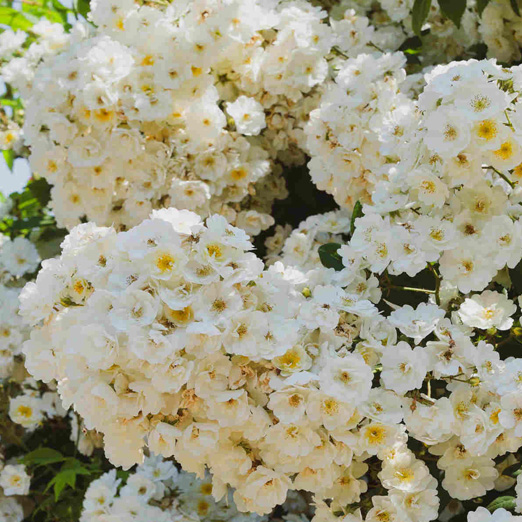How to grow Coronilla
Belonging to the pea family, coronilla is a genus of around 20 species found growing throughout Europe and North Africa. These include herbaceous annuals and perennials, as well as evergreen and deciduous shrubs. Many are cultivated for their delicate foliage and often fragrant, leguminous flowers.
This growing guide focuses specifically on the needs of evergreen shrub species.

Key Information
Soil pH
Position
Hardiness

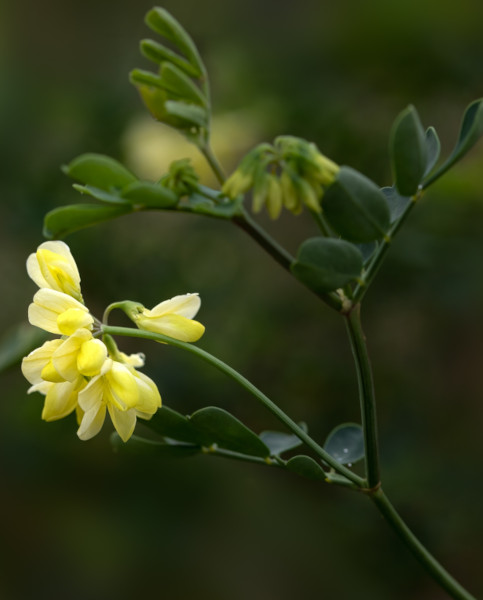
Where to plant Coronilla
For best results, plant in autumn or spring. An autumn planting is suitable for those gardening in mild conditions (broadly speaking, the southern half of the UK). For those liable to very cold winters it is best to wait until spring (generally the northern half of the UK). Planting can also be carried out during summer, though a watchful approach to watering is required.
To flower well, evergreen coronilla needs a sunny, sheltered spot – perhaps in a shrub border or, even better, against a south-facing wall.
How to plant Coronilla
In the ground
- Clear the chosen area of weeds.
- Dig a planting hole several times larger than the root ball. If you are gardening on poor soil, it is a good idea to mix in some well-rotted organic matter at this stage.
- Place the plant in the hole, ensuring the top of the root ball sits level with the surface of the soil. Too low and the plant may rot, too high and the roots can dry out.
- Backfill with soil and firm in gently.
- Soak well with water.
- Mulch around the base with well-rotted organic matter.
In a container
- Choose an appropriate container. The eventual size of evergreen coronilla can vary considerably, so do check individual descriptions for details. Ensure there are plenty of drainage holes.
- Use a good quality potting compost with plenty of horticultural grit mixed in, and, if not already present in the compost (check the description on the bag) some slow-release fertiliser granules.
- Start by partially filling the pot with compost; enough so that when placed on it the upper surface of the root ball is about 3cm lower than the top of the pot.
- Infill all the space surrounding the root ball with compost, firming down with your fingers then adding a little more so the plant is held tight.
- Pick up the pot (if you can!) and lightly tap on the potting bench or ground a few times to help further settle the compost around the plant.
- Soak well with water.
- A mulch with horticultural grit will look attractive and help to prevent a ‘cap’ or crust forming on the top of the compost (something container plants can suffer due to the artificial nature of their watering).
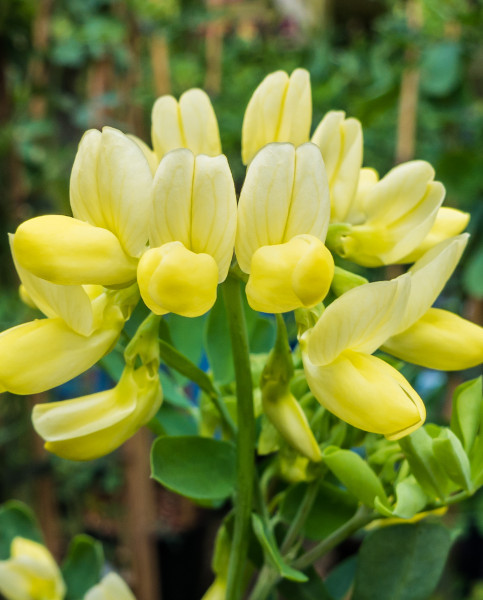
What to plant with Coronilla
There can be few better shrub and herbaceous associations than coronilla and euphorbia (particularly Euphorbia characias subsp. Wulfenii). From the matching delicate, grey-green foliage and acid yellow-green of the flowers, to the overlapping bloom periods and the similarly bushy forms, these two companions fit together with perfect ease.
If you would like any further planting ideas or growing advice for your evergreen coronilla, please contact our friendly and knowledgeable Customer Care Team - we will be more than happy to help you.
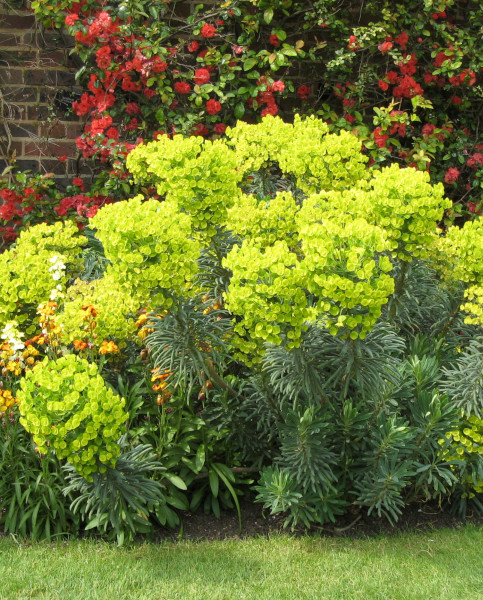
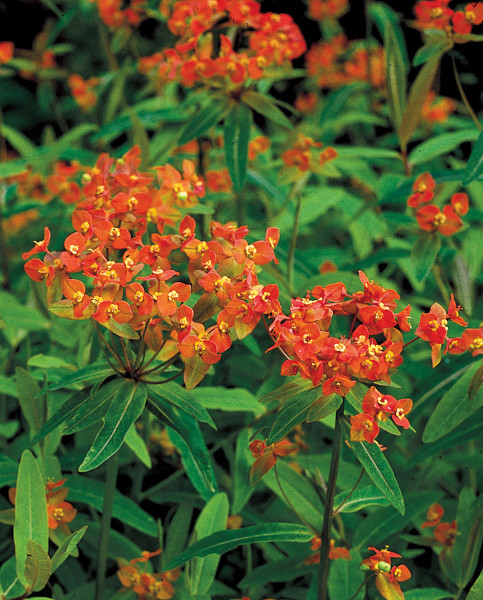
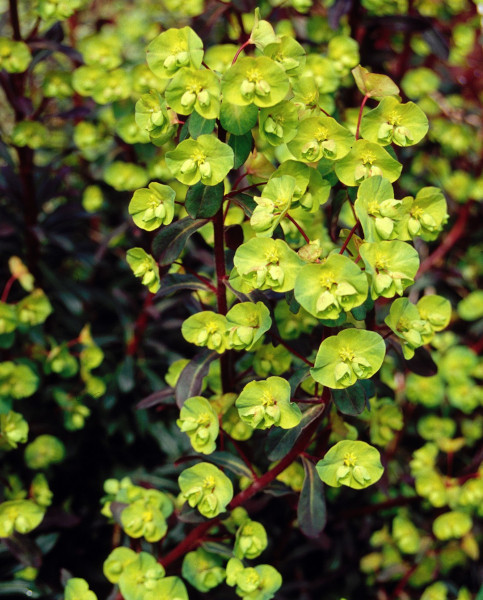
How to care for Coronilla
Pruning and Deadheading
Evergreen coronilla requires very little pruning, and apart from the occasional removal of dead, diseased and damaged wood (best done after flowering), can be left to its own devices.
If necessary, leggy and untidy specimens can be hard pruned to just above the ground in spring (again, after flowering). They grow back quickly from this treatment, responding with plenty of vigorous regrowth.
Watering
Water well until established, and then in very dry spells thereafter.
Container-grown coronilla will require regular watering throughout the growing season. Allow the top few centimetres of compost to dry out between soakings.
Cold Protection
Evergreen coronilla is hardy enough to come through the average UK winter with no need for additional protection. Having said this, growing against a warm south-facing wall is recommended, not only as added insurance against cold snaps, but also for better flowering.
Like all plants, those grown in containers can be more susceptible to cold damage. Consider moving to an unheated, frost-free environment (such as a conservatory or greenhouse), or wrapping the container with fleece or hessian.
Pests and Diseases
Evergreen coronilla tends to be largely trouble-free.
How to propagate Coronilla
Evergreen coronilla can be propagated by cuttings, taken during summer.
- Find non-flowering shoots 5-10cm long and snip off the plant.
- Put them in a plastic bag straight away to prevent drying out.
- Fill a container with a compost mix which is at least 50% perlite (or if you prefer, as we do, 100% perlite).
- Trim the end of the cutting to just below a node (point at which leaves grow).
- Remove the lowest third of leaves.
- If the remaining leaves are large, cut them in half with a sharp knife (to reduce water lost through transpiration).
- Insert the cuttings into the compost and water lightly. Several cuttings can be put in the same container if there is enough space to do this without them touching.
- Place in a greenhouse or propagating unit if you have one or covered with a plastic bag on a windowsill if not (out of direct sunlight).
- Keep the cuttings misted and occasionally watered until they root. You will know this has happened when roots emerge out of the bottom of the container.
- Gently remove rooted cuttings and pot them into individual pots. Grow on in a cool yet frost-free environment such as an unheated conservatory, greenhouse, or cold frame, until they are large enough to be planted out.
Common Coronilla Questions:
Is coronilla a climber?
Evergreen coronilla is what’s known as a ‘wall shrub’, i.e., a shrub which can be grown either as a freestanding specimen or trained against a wall. The latter can be achieved through pruning and does not require the presence of permanent supports (though some temporary supports may be useful in the initial stages). Other examples of wall shrubs include ceanothus, garrya, and chaenomeles.
Can you hard prune evergreen coronilla?
Yes, evergreen coronilla responds well to being cut right back in spring. See ‘Pruning and Deadheading’ section above for more details.
Can you take cuttings from evergreen coronilla?
This is best done in summer. See ‘How to propagage evergreen coronilla’ section above for detailed instructions.



